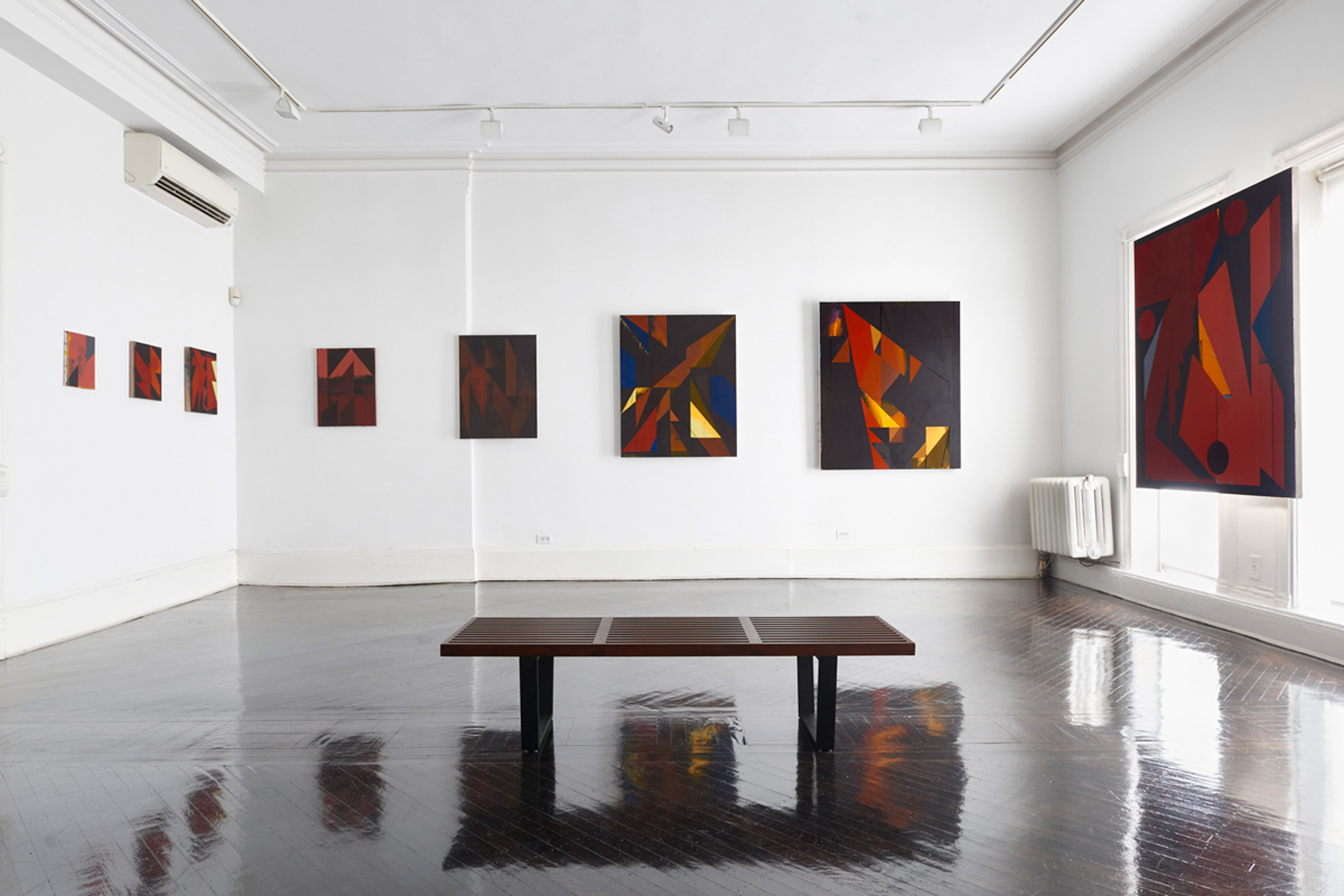The Dark Paintings
Henrique Faria Fine Art
New York
2018
From the press release:
Henrique Faria Fine Art is pleased to present The Dark Paintings, Jaime Gili’s (Caracas, 1972) first solo exhibition with the gallery. The exhibition title comes from Gili’s most recent series of the same name, in which he builds on a career-long interest in seriality and repetition, the Modernist ideal of synthesizing art and everyday life and the legacy of Geometric Abstraction in his home country of Venezuela.
The series was born out of the Sept. 9 2017 episode from the well-loved Venezuelan radio program “Nuestro insólito universo” (Our Unusual Universe), the five-minute long episodes of which have been broadcast multiple times a day since 1969, in which the narrator, Porfirio Torres, describes an enigmatic photograph taken by an amateur astronomer in which a black rectangle is seen floating above the city of Caracas and reminds listeners of a 1914 report of a UFO sighting, also in Caracas, adding further mystery to the rectangle’s alien presence. Using the black rectangle as his starting point for his paintings, Gili, while simultaneously invoking references to artists Ad Reinhart, Kazimir Malevich and Wassily Kandinsky as well as to director Stanley Kubrick’s black monolith in the film 2001: A Space Odyssey, reflects on the significance of the word “alien” as it pertains to the unrecognizable current state of Venezuela after years of social unrest and economic free-fall at the hands of an authoritarian socialist regime and the resulting dissolution of the society whose modernist works of art and architecture had failed to deliver.
As writer and curator Mónica Amor writes in the exhibition text, Gili’s work “harks back, as he himself has admitted, to the most important experiment with the synthesis of the arts in the postwar period: Carlos Raúl Villanueva’s Ciudad Universitaria (University City) in Caracas [… which was an] effort to integrate the arts in a public educational institution that registered the local dilemmas and natural conditions of the place.” This undertaking courted not only native artists, such as Carlos Cruz Díez, Alejandro Otero, and later, Gego, but also invited international art superstars, such as Victor Vasarely and Fernand Léger, to create monumental works of public art that would become seamlessly incorporated into building and factory façades, pedestrian walkways and plazas, as well as transit hubs. By mirroring a similar endeavor taken on by Constructivist artists in the newly Communist Russia, the builders of a new Venezuela sought to change the experience of daily life and to promote political ideologies through Modern art. However, as Gili states, “Nowadays, […] it is clear that the same works of public art, some in a ruinous state, have no connection with the future, but are closer to being meaningless structures, uncanny and alien to daily life, [in a country that] has been reduced to survival mode.” These public works of geometric abstraction, which were initially meant to represent a prosperous future, now read like hieroglyphics: a language that is no longer spoken, understood, or possibly even relevant to the people who encounter these works everyday.
For this exhibition, Gili, using the techniques and the idiom of Modernists, has created an insular environment through the installation of his paintings in the front gallery. While the paintings were inspired by Reuters’ photographs of homeless Venezuelan refugees sleeping on the streets of Barranquilla, Colombia, Gili, beginning with a black ground, reduced the shapes of the bodies to intersecting geometric forms, such as in a452 cocoanis couple (2018) and limited the color palette to darker reds, blues and yellows, as seen in a449 dark star no coco (2018). Gili advises the viewer, however, not to look for recognizable elements in the paintings, but rather to focus on the repetition and interchanging of shapes and colors and the serial placement of the canvases in ascending size around the perimeter of the front gallery. While Gili has restrained the narrative element in his paintings, he includes an intervened version of the above-mentioned radio episode so that the voice of Torres recounting a modified rendition of the paranormal events in Caracas reverberates throughout the room, challenging the detachment of abstract geometric art in contemporary society. As Mónica Amor concludes, “Like the many public works of geometric abstraction that lay in limbo in this ruined city, [the black rectangles of Gili’s works are an] allegory to the silence of painting and the alien status of utopia in the contemporary imaginary of our urban fictions.”
A book of poetry written by Adalber Salas Hernández has been written and published on the occasion of this exhibition.
+ Text by Mónica Amor+ PDF book: Ensayo en Sombra by Adalber Salas Hernández (Spanish)
+ Exhibition poster by Jaime Gili
+ LINK: Henrique Faria Fine Art








